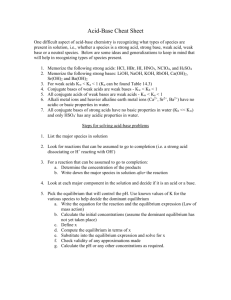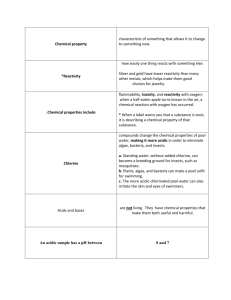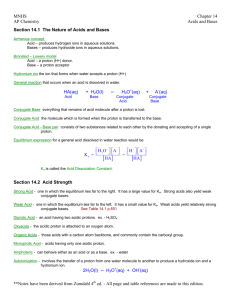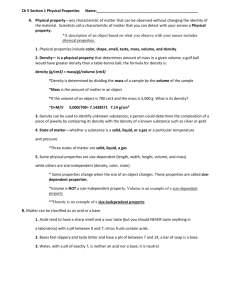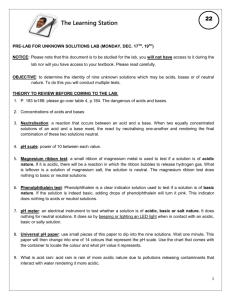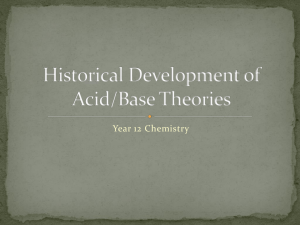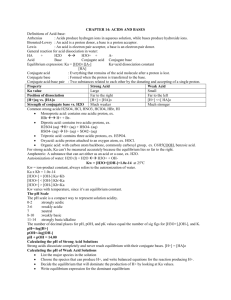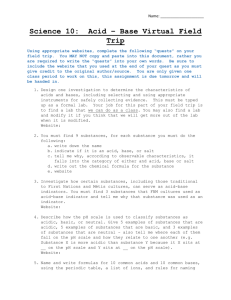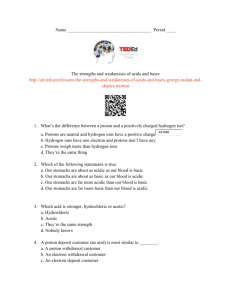Answers
advertisement
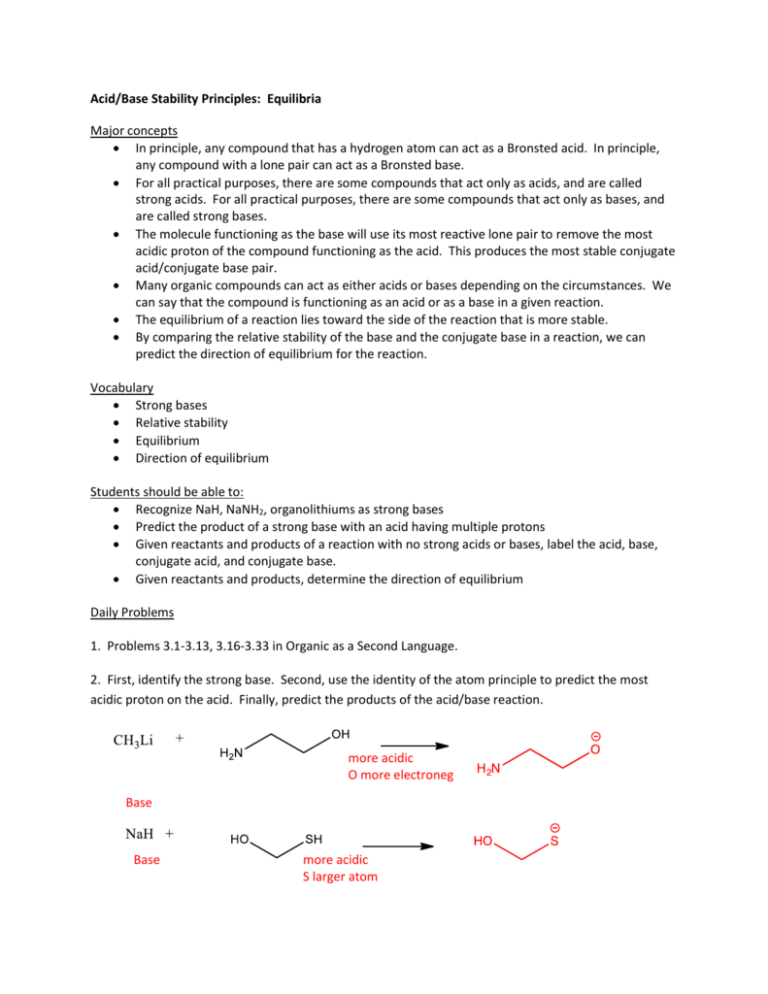
Acid/Base Stability Principles: Equilibria Major concepts In principle, any compound that has a hydrogen atom can act as a Bronsted acid. In principle, any compound with a lone pair can act as a Bronsted base. For all practical purposes, there are some compounds that act only as acids, and are called strong acids. For all practical purposes, there are some compounds that act only as bases, and are called strong bases. The molecule functioning as the base will use its most reactive lone pair to remove the most acidic proton of the compound functioning as the acid. This produces the most stable conjugate acid/conjugate base pair. Many organic compounds can act as either acids or bases depending on the circumstances. We can say that the compound is functioning as an acid or as a base in a given reaction. The equilibrium of a reaction lies toward the side of the reaction that is more stable. By comparing the relative stability of the base and the conjugate base in a reaction, we can predict the direction of equilibrium for the reaction. Vocabulary Strong bases Relative stability Equilibrium Direction of equilibrium Students should be able to: Recognize NaH, NaNH2, organolithiums as strong bases Predict the product of a strong base with an acid having multiple protons Given reactants and products of a reaction with no strong acids or bases, label the acid, base, conjugate acid, and conjugate base. Given reactants and products, determine the direction of equilibrium Daily Problems 1. Problems 3.1-3.13, 3.16-3.33 in Organic as a Second Language. 2. First, identify the strong base. Second, use the identity of the atom principle to predict the most acidic proton on the acid. Finally, predict the products of the acid/base reaction. more acidic O more electroneg Base Base more acidic S larger atom 3. First, identify the strong base. Second, use the resonance stabilization principle to predict the most acidic proton on the acid. Finally, predict the products of the acid/base reaction. δBase most acidic most acidic δ- δ- δ- Base 4. First, identify the strong base. Second, use the induction principle to predict the most acidic proton on the acid. Finally, predict the products of the acid/base reaction. Base Both sets of H are resonance stabilized, but only this one is stabilized through induction 5. First, identify the strong base. Second, use the hybridization principle to predict the most acidic proton on the acid. Finally, predict the products of the acid/base reaction. Base Based on orbitals, the sp orbital is more stabilizing than the sp2 or sp3. Cumulative problems 6. For each reaction, locate the base (B) and the conjugate base (CB). Use the principles you have learned to compare their stability, and then predict the direction of equilibrium Orbitals B CB Resonance B CB More resonance B CB 7. Do problems 3.35-3.40 in Organic as a Second Language. Extension problem 8. What if two principles are in conflict? It has been experimentally determined that this reaction equilibrium is favored to the right. Based on the experimental data, which base is more stable? In what way is this consistent with stability principles you have learned? In which way is it inconsistent with base stability principles? Base on ARIO, the N-containing base would be more stable in the comparison of a negative N and a negative C. If we compared the orbitals, the sp hybridized C would be more stable than the sp3 hybridized N. How do we choose which one is more stable overall? Experiment.
